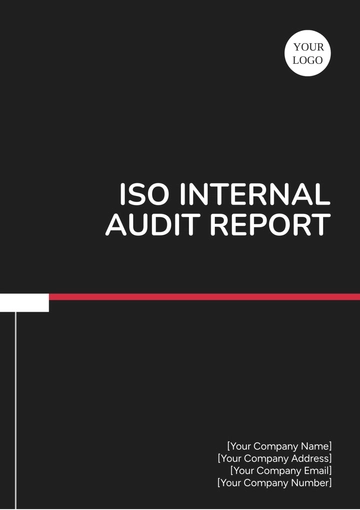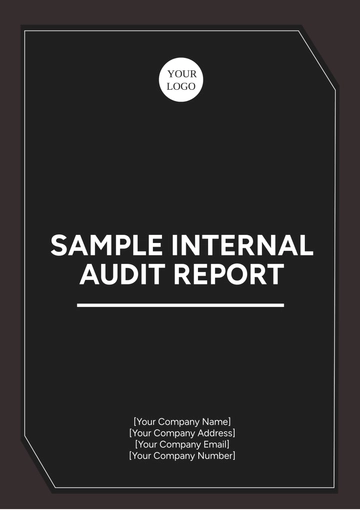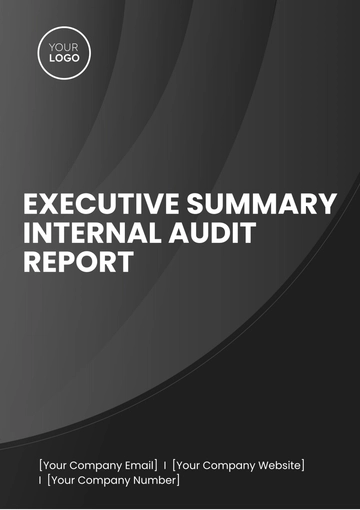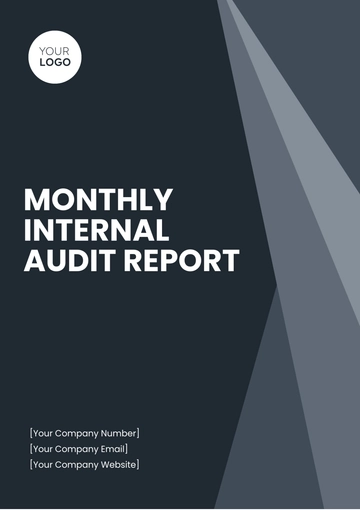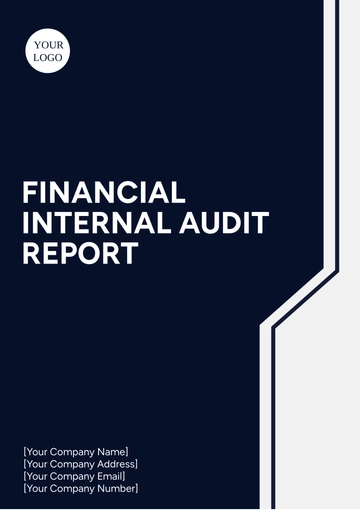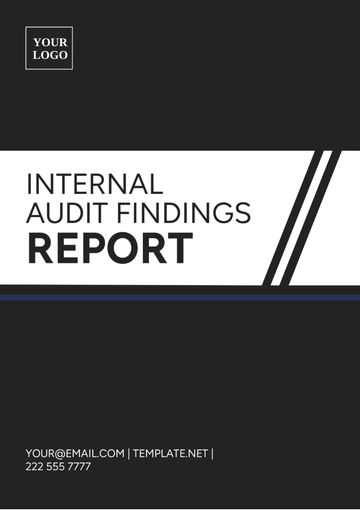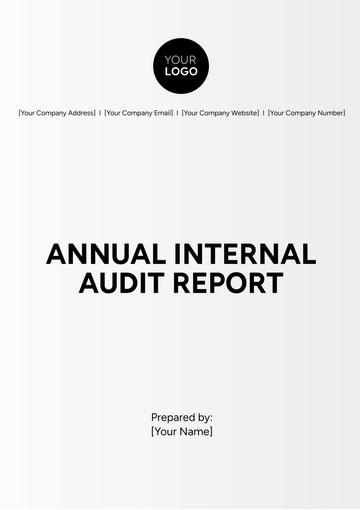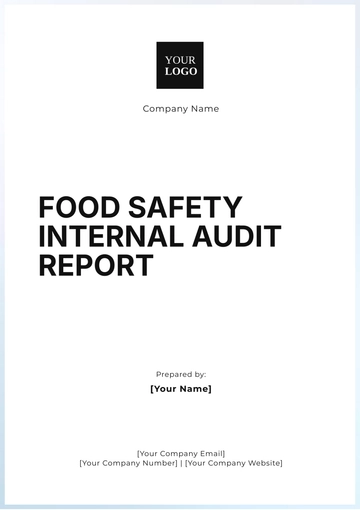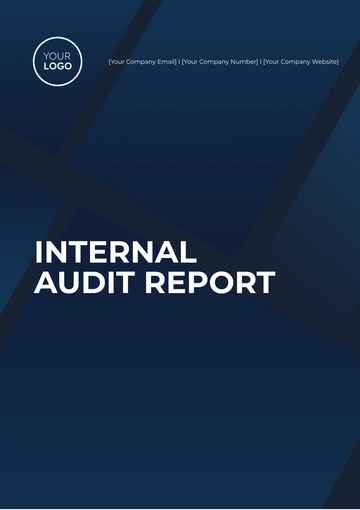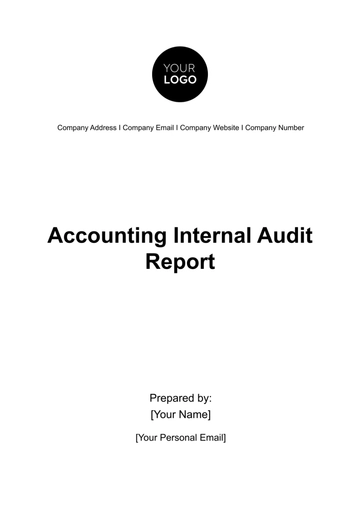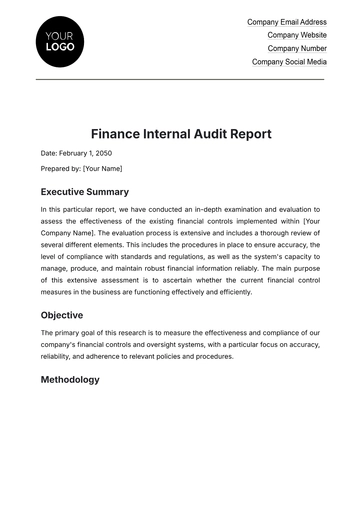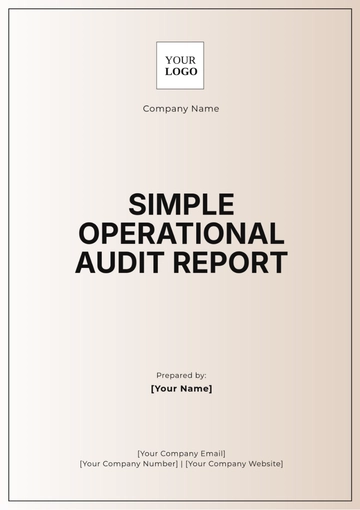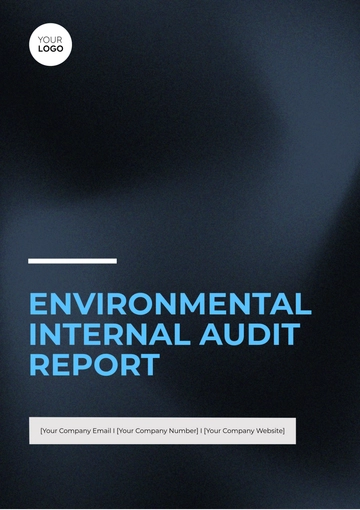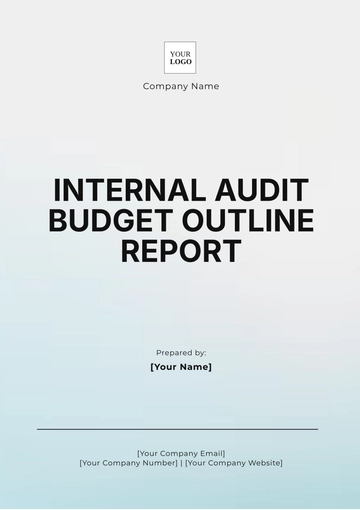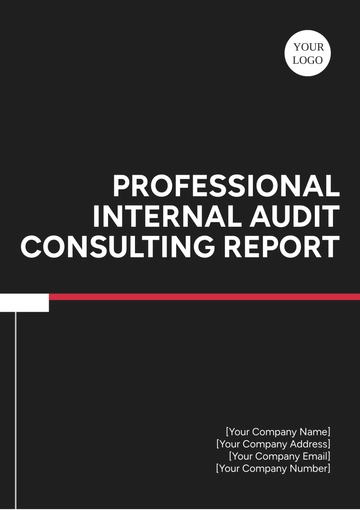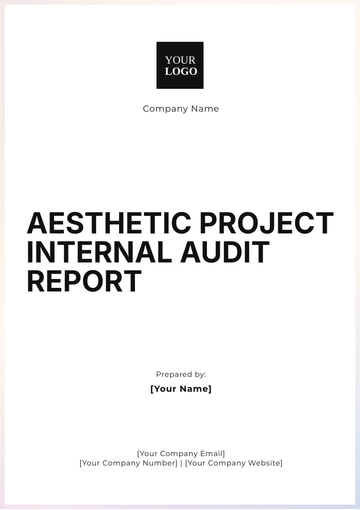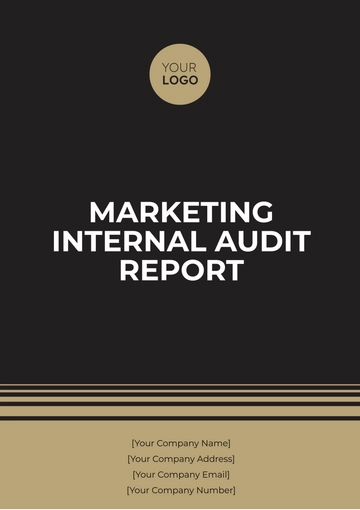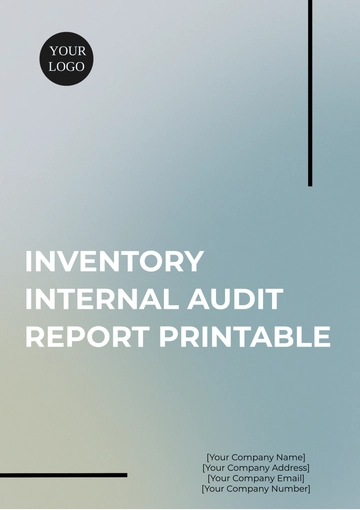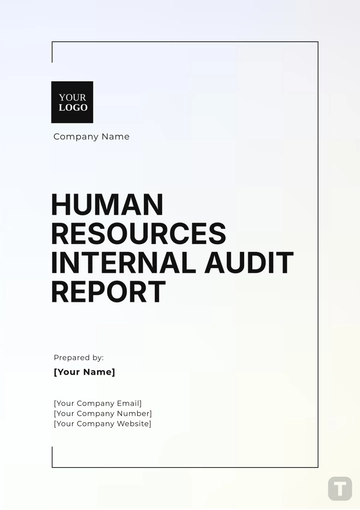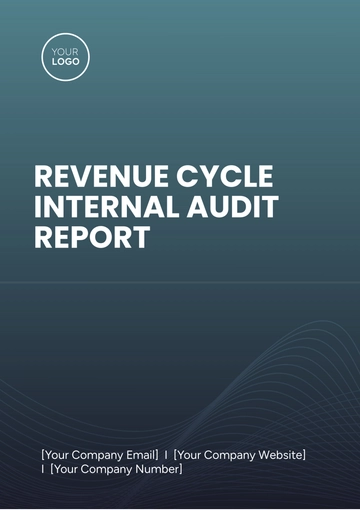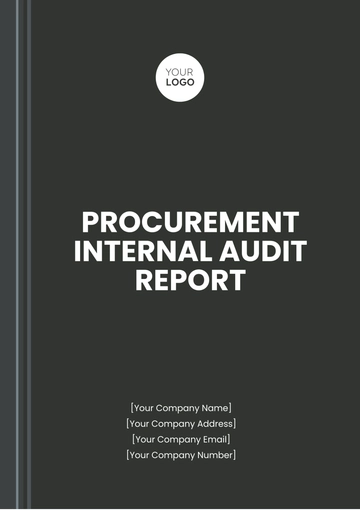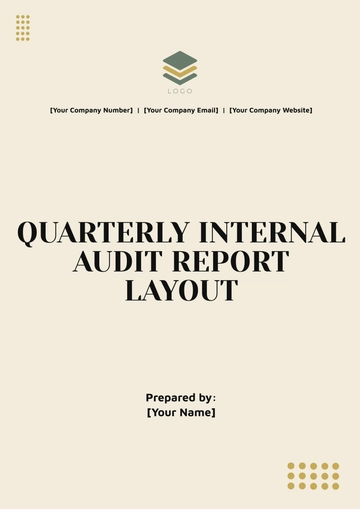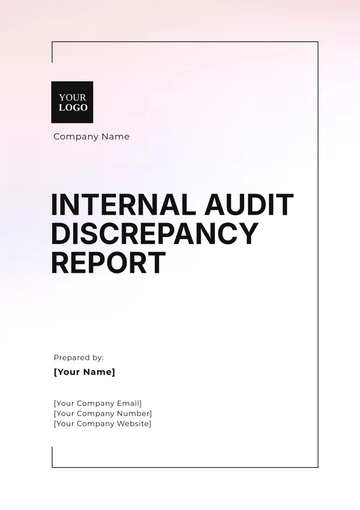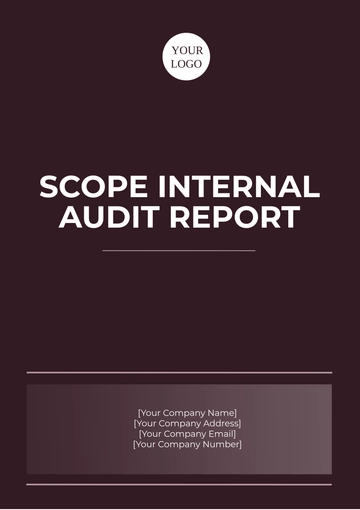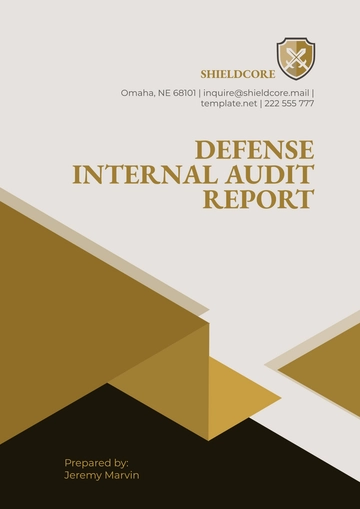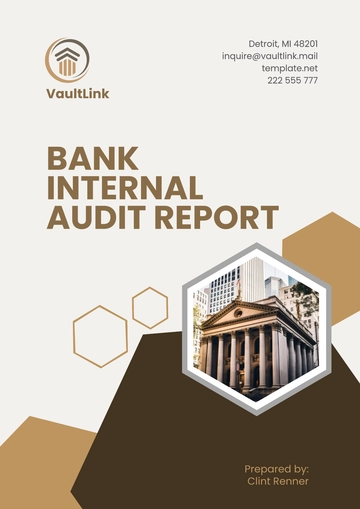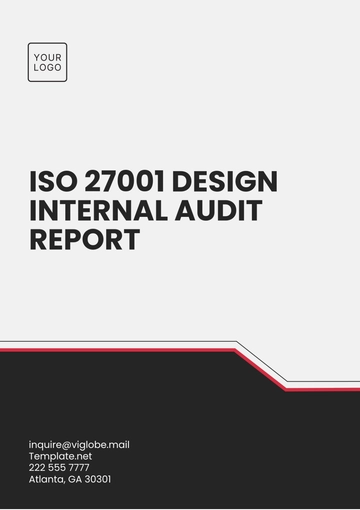Free Interior Design Audit Report
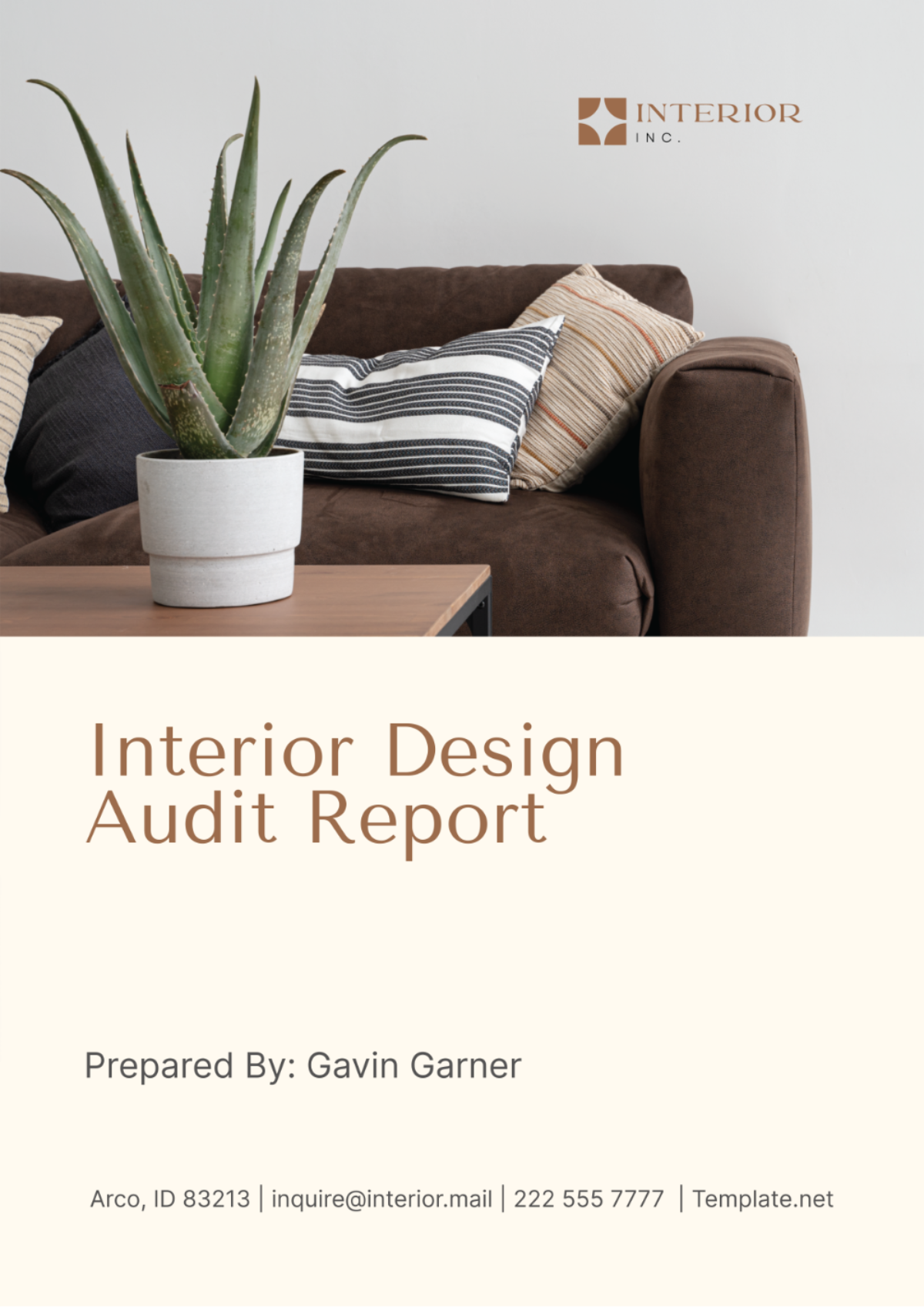
This report is prepared by: [Your Name]. This report is made under the company, [Your Company Name].
I. Executive Summary
The Interior Design Audit Report delivers a comprehensive analysis of [Your Company Name]'s inventory management and procurement strategies. By meticulously assessing the current system's ability to maintain optimal stock levels, this audit identifies key areas where strategic adjustments can significantly reduce operational costs and enhance efficiency. The focus is on ensuring that inventory practices support swift project execution while adhering to the highest standards of quality and design excellence.
This audit rigorously evaluates the suitability and quality of materials procured, comparing them with top industry standards and specific client demands. Our findings highlight critical areas for improvement in supplier selection and purchase processes. By aligning our procurement strategies more closely with cutting-edge industry practices, we can boost our competitive edge, ensuring that our design solutions are both innovative and cost-effective.
Recommendations outlined in this report aim to refine [Your Company Name]'s inventory system to better support the dynamic needs of our projects and clients. Proposed enhancements include adopting advanced inventory tracking technologies, tightening supplier partnerships, and implementing more rigorous quality control measures. These steps will safeguard against excess stock and obsolescence, ultimately leading to improved profitability and client satisfaction.
II. Inventory Management Analysis
To enhance the operational effectiveness of [Your Company Name], a detailed examination of our inventory management system has been conducted. The findings from this audit are crucial in optimizing stock levels and aligning them with project requirements. Below is a comprehensive table that summarizes the key points of the analysis with vital insights and stats:
Audit Component | Findings | Insights and Recommendations |
|---|---|---|
Inventory Levels vs. Project Demands | Analyzed last quarter’s inventory levels against project schedules. Identified mismatches in supply-demand for key materials. | Recommend implementing just-in-time inventory practices to reduce holding costs and minimize excess inventory. Adjust reorder points based on project forecasts. |
Turnover Rates Analysis | Turnover rate at 60% annually, indicating potential overstocking of slow-moving items and understocking of high-demand materials. | Increase monitoring of item-specific turnover rates. Discontinue or reduce order quantities for underperforming stock and increase focus on high-rotation items. |
Inventory Tracking Efficiency | Current system shows a lag in updating inventory changes, leading to discrepancies in stock data and actual levels. | Suggest upgrading to an automated inventory management system with real-time tracking capabilities to enhance accuracy and response times. |
This analysis underscores the need for a more flexible and responsive inventory system. By addressing these discrepancies and implementing the recommended solutions, [Your Company Name] can avoid project delays and reduce unnecessary expenditures, thereby enhancing overall efficiency and client satisfaction.
III. Procurement Process Evaluation
In the audit of [Your Company Name]'s procurement practices, we scrutinize several critical aspects to ascertain the efficiency and effectiveness of our current methodologies. The following table outlines the key components of the procurement process evaluation, detailing the findings and offering strategic recommendations for improvement:
Evaluation Component | Findings | Insights and Recommendations |
|---|---|---|
Vendor Selection Criteria | Criteria are often misaligned with project-specific needs, leading to inconsistent supplier performance. | Revise vendor selection protocols to ensure a better match between supplier capabilities and project requirements. Implement a scoring system based on performance, reliability, and cost-effectiveness. |
Communication Effectiveness | Communication with suppliers is irregular and often reactive, leading to delays and misunderstandings. | Establish regular communication schedules and use centralized communication platforms to enhance clarity and response times. Train procurement staff in effective negotiation and relationship management skills. |
Comparative Supplier Analysis | Significant variance in cost, quality, and delivery timelines across suppliers. | Conduct regular reviews of supplier performance. Develop a preferred supplier program that rewards consistent quality and reliable service with more business and better terms. |
This evaluation pinpoints critical areas in the procurement process where [Your Company Name] can achieve considerable improvements. By refining vendor selection criteria, enhancing communication strategies, and optimizing supplier relationships, we can significantly reduce costs and improve material quality, ultimately leading to more successful project outcomes and heightened client satisfaction.
IV. Quality and Compliance Check
The rigorous inspections and audits performed on the materials used in recent projects are essential to maintaining the high standards expected at [Your Company Name]. This section of the audit specifically targets the adherence to quality standards and compliance with safety protocols. Below is a detailed table summarizing the findings from the quality and compliance checks, along with actionable insights:
Check Component | Findings | Insights and Recommendations |
|---|---|---|
Adherence to Industry Standards | Some materials failed to meet required safety and performance standards, impacting project outcomes. | Implement stricter quality control measures at the procurement stage. Introduce third-party certifications and regular training for quality assurance teams. |
Safety Protocol Compliance | Inconsistent compliance with safety protocols across suppliers, with some materials lacking proper documentation. | Mandate comprehensive safety compliance documentation from all suppliers. Conduct random audits to ensure continuous compliance. |
Client Feedback on Materials | Feedback indicates varying levels of satisfaction regarding material durability and aesthetic alignment with design concepts. | Enhance client involvement in the material selection process to ensure expectations are met. Regularly update material catalogs to reflect the latest and most reliable products. |
This thorough analysis highlights the importance of reinforcing our quality assurance processes and implementing corrective measures. By focusing on these key areas, [Your Company Name] can ensure that the materials used not only meet but exceed the required standards, thereby enhancing client satisfaction and upholding our industry reputation.
V. Recommendations and Strategic Adjustments
The audit of [Your Company Name]'s inventory and procurement operations has led to the identification of several strategic adjustments needed to enhance efficiency and align with industry best practices. The table below details these key recommendations along with the expected strategic adjustments and potential outcomes:
Recommendation | Strategic Adjustments | Potential Outcomes |
|---|---|---|
Adopt New Inventory Software Tools | Implement advanced inventory management software that features real-time tracking and analytics. | Enhanced accuracy in stock levels, reduced inventory carrying costs, and improved project timelines. |
Revisit Supplier Contracts | Negotiate more favorable terms based on performance metrics and establish stricter compliance clauses. | Better pricing, improved supply chain reliability, and higher quality material sourcing. |
Increase Staff Training | Develop comprehensive training programs focusing on modern procurement practices and compliance standards. | Increased proficiency among staff, fewer procurement errors, and more strategic sourcing decisions. |
Introduce Regular Quality Checks | Schedule routine audits and quality assessments for both incoming materials and final inventory. | Consistently high-quality materials, fewer project delays due to non-compliance, and enhanced client satisfaction. |
Prepared on: [Current Date]
- 100% Customizable, free editor
- Access 1 Million+ Templates, photo’s & graphics
- Download or share as a template
- Click and replace photos, graphics, text, backgrounds
- Resize, crop, AI write & more
- Access advanced editor
Elevate your interior design projects with Template.net’s Interior Design Audit Report Template. This editable and customizable template is specifically designed to streamline your reporting process, ensuring comprehensive audits with ease. Tailored for precision, editable in our Ai Editor Tool, it empowers designers to present beautifully organized audits that impress clients and enhance project workflows. Optimize your professional standards today with Template.net.
You may also like
- Sales Report
- Daily Report
- Project Report
- Business Report
- Weekly Report
- Incident Report
- Annual Report
- Report Layout
- Report Design
- Progress Report
- Marketing Report
- Company Report
- Monthly Report
- Audit Report
- Status Report
- School Report
- Reports Hr
- Management Report
- Project Status Report
- Handover Report
- Health And Safety Report
- Restaurant Report
- Construction Report
- Research Report
- Evaluation Report
- Investigation Report
- Employee Report
- Advertising Report
- Weekly Status Report
- Project Management Report
- Finance Report
- Service Report
- Technical Report
- Meeting Report
- Quarterly Report
- Inspection Report
- Medical Report
- Test Report
- Summary Report
- Inventory Report
- Valuation Report
- Operations Report
- Payroll Report
- Training Report
- Job Report
- Case Report
- Performance Report
- Board Report
- Internal Audit Report
- Student Report
- Monthly Management Report
- Small Business Report
- Accident Report
- Call Center Report
- Activity Report
- IT and Software Report
- Internship Report
- Visit Report
- Product Report
- Book Report
- Property Report
- Recruitment Report
- University Report
- Event Report
- SEO Report
- Conference Report
- Narrative Report
- Nursing Home Report
- Preschool Report
- Call Report
- Customer Report
- Employee Incident Report
- Accomplishment Report
- Social Media Report
- Work From Home Report
- Security Report
- Damage Report
- Quality Report
- Internal Report
- Nurse Report
- Real Estate Report
- Hotel Report
- Equipment Report
- Credit Report
- Field Report
- Non Profit Report
- Maintenance Report
- News Report
- Survey Report
- Executive Report
- Law Firm Report
- Advertising Agency Report
- Interior Design Report
- Travel Agency Report
- Stock Report
- Salon Report
- Bug Report
- Workplace Report
- Action Report
- Investor Report
- Cleaning Services Report
- Consulting Report
- Freelancer Report
- Site Visit Report
- Trip Report
- Classroom Observation Report
- Vehicle Report
- Final Report
- Software Report
